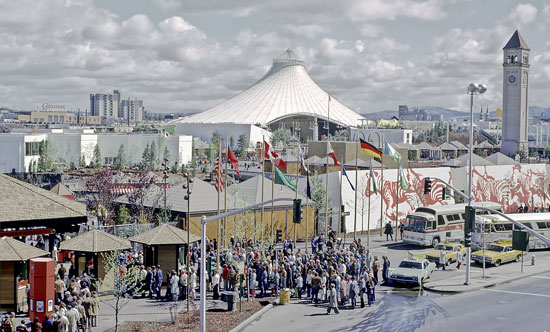Treasures of the Archives: Spokane City Planning Department EXPO'74 Photographic Collection

In 1974, Spokane became the smallest city to ever host a World's Fair. The community used the opportunity to re-vitalize the depressed downtown district. The Great Northern Railroad Depot, which had occupied the centrally located Havermale Island for the better part of a century, was torn down. In its place, Spokanites erected many buildings and planned outdoor spaces, the seeds of which would later become Riverfront Park.
Deciding not to emulate Seattle and other recent World's Fairs, which had mostly chosen themes of futurism and technology, the planning committee instead picked environmentalism. In the era of the clean water act and the founding of the EPA, the theme went over well, although some criticized what they considered shallow use of the term, and what they believed was hypocritical environmental harm caused by the fair. The fair was considered by most Spokanites to be a great success, almost breaking even and pumping millions into the local economy. Perhaps the most lasting impact has been a re-vitalization of the riverfront area, which was reclaimed thanks to the fair, and is now a place of recreation and natural beauty.
The Washington State Archives Spokane City Planning Department EXPO'74 Photographic Collection contains dozens of images of the planning and construction phases of Expo, such as this image of the original industrial downtown area. The above image is of the “red gate entrance” during opening day.

